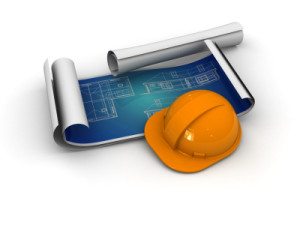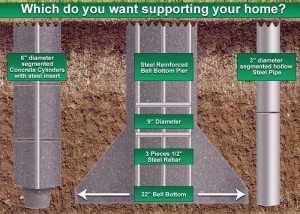
It really is an interesting story, the way bell bottom piers came into existence. Though a structural engineer from MIT is credited with the design, it was a country well-digger that inspired it. The engineer was Willard E. Simpson of San Antonio, Texas. The well-digger was Ed Dudersudt. Truthfully, Dudersudt’s mule could claim some of the credit also.
Simpson was born in the Alamo City in 1883. He was educated in private schools and at Texas Military Institute. He then went to the Massachusetts Institute of Technology with the hopes of becoming a naval architect. But his professors encouraged him to become a structural engineer. He returned home after graduation to take many projects in the large Texas cities.
Simpson’s work in this area soon revealed a problem with the soils. The soils were too unstable to support large structures adequately. Combined with buildings getting larger, skyscrapers becoming prominent and the challenge to build in Texas, general contractors were looking for someone who had ideas how to handle such large buildings and the foundation support needed. At that time, foundations were built a little deeper than they are now and the slab would rise and sink with the changing soil moisture. And they would crack. No one had come up with an answer.
The young engineer, as he was watching a residential slab being poured, noticed a local well-digger—Ed Dudersudt—drilling a well nearby. The way he was doing it caught Simpson’s full attention. Dudersudt had a mule hooked up to an auger. The mule was walking in a circle around the 18-inch auger and the auger was drilling deep into the ground. Simpson talked Dudersudt into working with him on an idea—to use the mule and auger to dig holes into the ground, past the unstable soil to bedrock or stable soil. He then filled the holes with concrete and reinforcing bars. Pouring the foundation on top of these piers, Simpson had come up with the drilled pier system that is the origin of bell bottom piers. The year was 1916.
But there was more. Simpson had the idea to widen the bottom of the pier to give even more support and sure footing. So he lowered a worker down the hole and had him dig out the flared bell and filled that with concrete. The design was complete. Simpson had created the bell bottom pier foundation system. This enabled Simpson to design and build such large structures as the Gulf Building in downtown Houston (1939), the International Bridge over the Rio Grande in Laredo (1921), Baylor University’s football stadium (1950), and many, many other structures that are still landmarks throughout the state.
The research has shown that bell bottom piers are still the most reliable method of foundation repair. Research data has proven it. Researchers continue to test it. There have been improvements, mostly in the quality and strength of the materials. The design has seen some adjustments. But bell bottom piers, to this day, are the gold standard for foundation engineering and foundation repair. That is why Dawson Foundation Repair has staked its reputation on this reliable method. Bell bottom piers may have made Williams Simpson a structural engineer superstar, but more importantly, bell bottom piers are the best way to ensure your home withstands the stress of changing soil conditions in Texas.
Dawson Foundation Repair installs only Bell Bottom Piers for homeowners and commercial property owners. Bell Bottom Piers have far more advantages over any other method of foundation repair and we feel the homeowner should receive the best option available. Dawson Foundation Repair services homes and commercial businesses all over Texas including Austin, Corpus Christi, Dallas, Houston, San Antonio, and other smaller cities. Call us for a free inspection and assessment of your home’s foundation security.

